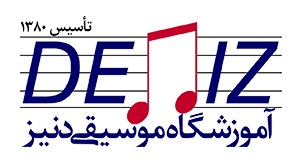What is an MPC Wallet? The Complete Guide 2023
Content
Blockdaemon is widely regarded as having one of the industry’s most experienced, respected, and trusted MPC cryptography teams. On acquiring Sepior in 2022, Blockdaemon introduced the world’s first https://www.xcritical.com/ MPC wallet in 2018, working in partnership with SBI Holdings of Japan. Our Advanced MPC technology has undergone years of third party audits and reviews, and been widely exercised in real-world MPC wallet deployments. As an organization that manages digital assets expands, adjusting the process of accessing and transferring digital assets using a multisig protocol can be cumbersome.
What is an MPC wallet used for? 4 example use cases
Krayon’s WaaS API includes a reliable on/off-ramp so your users can easily move from fiat to crypto and back again. Let your users buy crypto with cash deposits via bank transfer or using a local debit card in over 160 countries. Unlike other fiat ramp APIs, Krayon sources pricing from twelve different crypto exchanges, guaranteeing your users the best possible rate when switching from fiat to crypto. Contracts can be whitelisted at mpc crypto every level of the hierarchy, from organisation to wallet and individual users. We’ll go over what an MPC wallet is, how it works, what use cases it enables, and how to get started with different MPC wallet options — whether you’re a user, or a developer. They want to find out their average pay without telling each other how much they make.

Key Features of MPC Wallet Solutions
The same contract whitelisting permissions can be applied to mass payment features. MPC wallets can use social recovery, where trusted contacts help restore access if key shares are lost. MPC is a cryptographic method that splits key computations across multiple devices, enhancing security without a single point of failure. MPC is a subfield of cryptography that started in the 1970s, with real Initial exchange offering uses starting in the 1980s.
Are you up to speed on MPC and wallet security?
The choice of an MPC wallet depends on your specific needs and preferences, as each MPC wallet has its unique features and benefits. We recommend researching the different options and comparing their capabilities to determine which wallet aligns best with your goals and requirements. There are two main cryptographic schemes that can be used to design MPC wallets, Shamir Secret Sharing (SSS) and Threshold Signature Scheme (TSS). Achieve operational efficiency with Bitpowr’s robust automation protocols including determining when to collect funds and automating gas refill for EVM addresses to prevent failed transactions. Our powerful blockchain product suite helps businesses and institutions build the ecosystem of tomorrow. Most conventional wallets like Ledger and Trezor are incompatible with MPC wallets.
Why Your Platform Needs MPC Wallet as a Service: Top 10 Benefits
For instance, buying and selling non-fungible tokens (NFTs) via popular NFT marketplaces has become more convenient and secure. Each party’s private information cannot be worked out once the protocol has been executed. Rapidly build production-ready integrations with modern tools, from React components to real-time webhooks. Using Krayon’s developer platform means less maintenance for legacy systems and more focus on customer and product experiences.
Governments and public sector entities use blockchain for secure voting systems, identity management, and asset tokenization. MPC wallet development enables these organizations to implement secure and scalable wallets, facilitating transparent and tamper-proof operations. Krayon uses multi-party computation to provide institutional grade custody to our users, and now you can build your own MPC-based wallet too. MPC technology has become the top choice for strong security solutions in big institutions because of the many benefits it offers.
With the combination of MPC technology with hardware isolation, Fireblocks’ institutional MPC wallet maximizes security and service level agreements (SLAs) while minimizing transaction costs. Decentralized Finance (DeFi) platforms are built on smart contracts and rely on secure wallet infrastructure to function. By integrating MPC Wallet Solutions, DeFi platforms can enhance security, ensuring that user funds and platform operations are protected from malicious actors. In supply chain operations, blockchain is used to enhance transparency and traceability. With MPC wallet development, enterprises can securely manage tokens representing goods, payments, or services, ensuring that transactions are tamper-proof and compliant with contractual agreements. Institutional investors dealing with large-scale crypto portfolios prioritize security and compliance.

MPC Wallet development entails the creation of wallets that utilize this advanced technology to ensure optimal security and operational flexibility for the management of digital assets. Such wallets are especially advantageous for enterprises engaged in large-scale cryptocurrency transactions or those necessitating institutional-grade security. It is a single-signature wallet that focuses on providing a user-friendly experience for managing digital assets on various blockchains. Coinbase has recently launched their MPC wallet offering, however, which is separate from the Coinbase Wallet that most users know which is an externally-owned account, or EOA — meaning it is not a smart contract wallet. This approach enhances security as no single party has access to the complete private key, eliminating single points of failure. When a transaction needs signing, the involved parties collaborate to generate the signature without reconstructing the private key, ensuring that the assets remain secure throughout the process.
MPC algorithms are not standardized and the solutions are not open-source, which makes them difficult to use for retail customers. An MPC wallet is the foundational piece of infrastructure for institutional custodians, investors, and traders, and choosing the right wallet will be based on your needs. Given the advantages of using MPC technology, numerous organizations offer web3 wallets that depend on MPC technology including, Zengo, Fireblocks, and Coinbase. Through the MPC wallet development, enterprises can attain a seamless equilibrium among security, usability, and scalability.
These wallets usually require some degree of technical knowledge, and users need to make sure their keys don’t get lost or stolen. Join hundreds of digital asset businesses taking advantage of the best wallet custody solution to build secure financial products, deliver better digital asset services, and future-proof your financial operations. Deploy modern and compliant wallets built on flexible technology designed to grow with your financial institution. Launched in 2019 as the first consumer-facing MPC wallet, Zengo now boasts 700,000+ global customers, multichain support, and 24/7 live in-app customer service. In early 2022, Zengo announced support for web3-native applications by bringing MPC security to everyday users, leveraging advanced web3 firewall technology to increase safe transaction approvals.
We hope this blog post has helped you better understand what a MPC wallet is, how it compares to other smart contract wallet solutions such as Multisig wallets, and how to get started with MPC wallets. MPC Wallets can be configured with different threshold schemes, allowing for a specific number of parties to sign a transaction successfully, even if some parties are unavailable. For example, a 3-of-5 scheme would require three out of five key shares to sign a transaction, providing a level of fault tolerance and ensuring that wallet access is maintained even if some parties are unreachable. DKG ensures no single party holds the entire private key, enhancing security by keeping key shares distributed. As such, MPC technology is now applied to a range of use cases, such as securing digital assets in MPC wallets or keeping certain information private during digital auctions. Different MPC wallets offer different features and services that can enhance your crypto experience.
In today’s fast-moving digital asset ecosystem, multisig wallets are losing adoption for multiple reasons, including but not limited to a lack of protocol agnosticism and operational inflexibility. By following this structured integration process, businesses can leverage MPC Wallet-as-a-Service to enhance their platforms with secure, scalable, and user-friendly wallet solutions. Secure Multiparty Computation (MPC) has emerged as the institutional- and custody-grade wallet technology of choice for both traditional and emerging players in the digital asset market. However, not all MPC wallets are created equal and it’s worthwhile to step back and evaluate the different MPC wallet technology options when planning to implement your next wallet. The non-custodial wallets are often seen as safer storage options as users don’t need to trust a service provider or a third party with their keys. However, being in full control over your wallets and keys also has disadvantages (especially for beginners).
- These words allow a user to restore a private key in case of a loss of wallet or compromise.
- DKG ensures no single party holds the entire private key, enhancing security by keeping key shares distributed.
- It basically splits a wallet’s private key among multiple parties to increase privacy and reduce the risks of hacking, breaches, and losses.
- In this scenario, the employees would use a multi-party computation (MPC) protocol to calculate their average salary without disclosing sensitive or private information.
- Depending on your use case, you may have different requirements for security, performance, functionality and cost.
- It may be possible to recover lost private key shares depending on the wallet provider’s specific implementation of MPC technology.
- With MPC wallets, the private key is split into shares and jointly computed by the parties involved, without ever being fully reconstructed.
Multisig (short for Multi-Signature) wallets, on the other hand, require multiple signatures from different parties to authorize transactions. A multisig wallet is typically set up with an “M-of-N” scheme, where M signatures out of N total participants are required to approve a transaction. The private keys are not divided in this case; instead, each participant has their own distinct private key. Throughout the process, the private key shares are never exposed, and the parties cannot access each other’s shares.
Wallet as a Service (WaaS) is a highly secure and scalable crypto wallet infrastructure, offering flexible options for digital assets management for businesses and institutions of all sizes. MPC wallets and Multisig wallets are both tools for improving security and control over digital assets, but they are not the same. MPC wallets use a cryptographic technique where the private key is divided into multiple shares, while Multisig wallets require multiple signatures from different parties to authorize transactions. MPC wallets provide various use cases for individuals, organizations, and institutions that require secure and efficient management of digital assets.
However, with MPC there is only one private key which is sharded and encrypted before being distributed. It’s an incredible secure solution, offering the greatest operational flexibility to companies and teams. This guide to MPC (Multi-Party Computation) wallets provides an overview of this critical technological advancement that stands out for both its usability and security in the world of blockchain. Designed to safeguard cryptocurrencies and other digital assets through distributed key generation and storage, MPC wallets are an increasingly popular method for storing and managing assets on blockchain.







